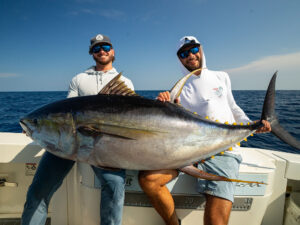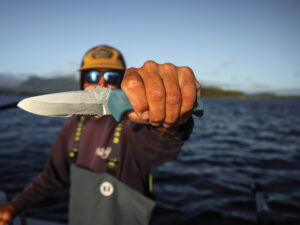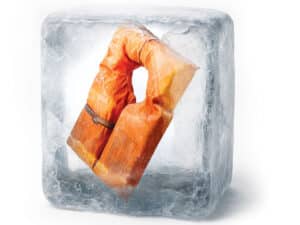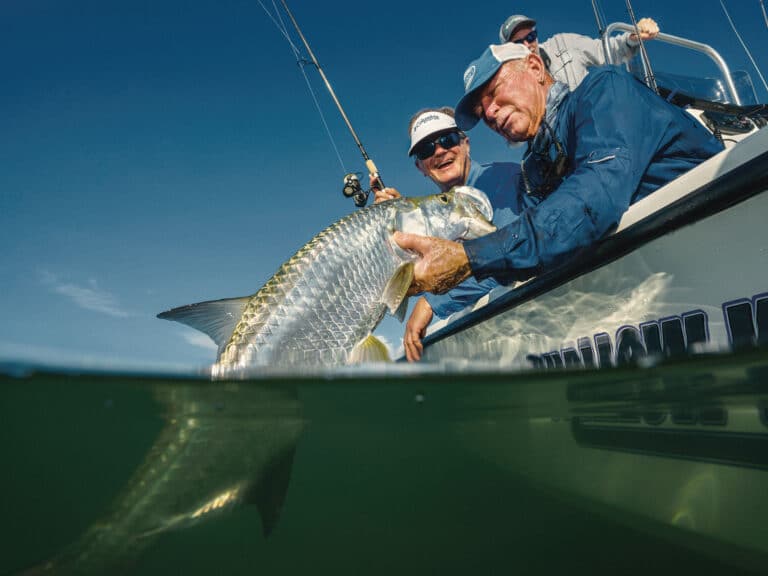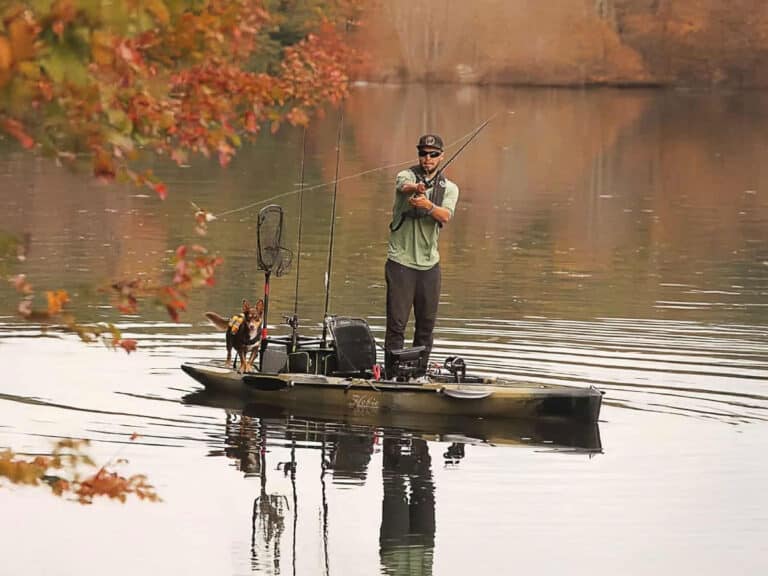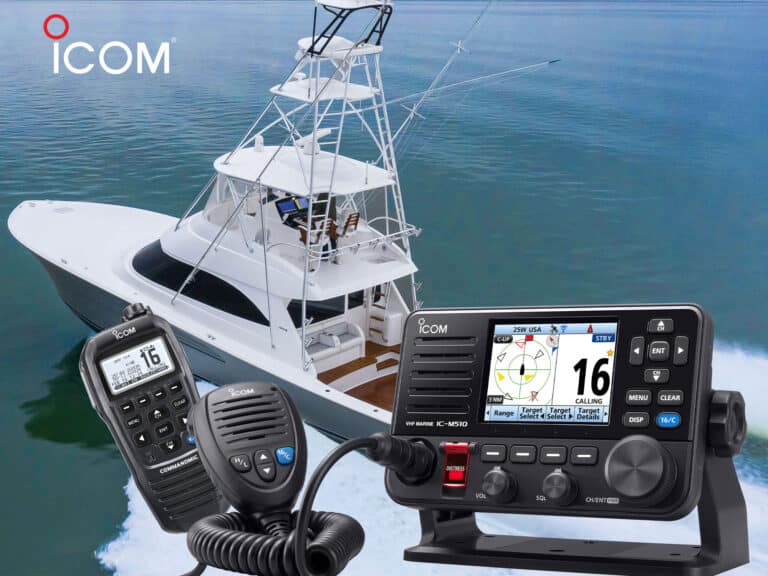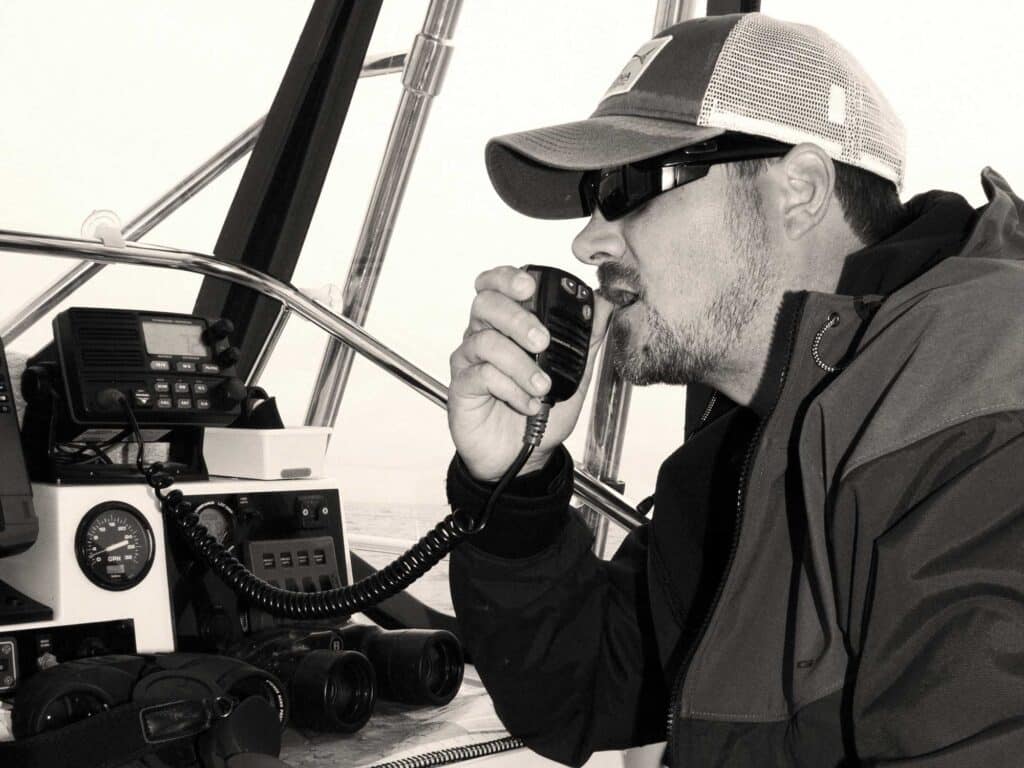
If you haven’t purchased a marine VHF radio lately, you might not know that today’s VHF units include a multitude of advanced built-in or optional features—in addition to voice communication—that boost versatility and enhance boating safety. They are far more than just squawk boxes.
Depending on the model, a VHF can serve as a Digital Selective Calling (DSC) automatic distress alert system, a GPS receiver, a navigational device, an Automatic Identification System (AIS) receiver, a compass, a loud-hailer or an automatic foghorn. Many also feature scanners and scramblers to facilitate and privatize communications. You can also option out a VHF with wireless mics, remote speakers and more. Consider these six notable extras when purchasing your next VHF.
GPS Functionality
To enable a number of advanced features, VHF radios require GPS. In the past, this meant hard-wiring with an onboard GPS source such as chart plotter through the NMEA 0183 or NMEA 2000 network. However, a number of today’s fixed-mount VHF models, such as Icom’s M42G and Standard Horizon’s GX2410 GPS, now offer built-in GPS.
These VHFs internalize the GPS antenna, so there’s no need to run a separate cable and install a mount for an external antenna. This eliminates the clutter of extra wires and cables and simplifies the VHF installation, while also serving as the basis for other advanced features, including DSC, AIS and navigation.
On VHFs without built-in GPS, many now offer NMEA-2000 plug-and-play capabilities to network with an onboard GPS source. This is a much simpler and more robust system than the old-school NMEA-0183 method that required splicing tiny wires together once you’ve figured out which wires to connect.
DSC Automatic Distress Alert
While not a new feature, the DSC distress alert function is required by the US Coast Guard on all of today’s fixed-mount VHFs, and it’s also found on some handheld VHF models such as the Icom M94D and Cobra MR HH600 FLT GPS, both of which also include built-in GPS. In an emergency, you press the VHF’s “Distress” button (which is covered to prevent accidental activation) to automatically issue an alert over VHF Channel 16 to rescue agencies and other boaters within radio range.
The VHF requires setup ahead of time to make the Distress feature fully effective. This includes registering for a Mobile Maritime Service Identity (MMSI)—a unique nine-digit number for the boat used by the Coast Guard—and, as indicated earlier, ensuring the VHF has a GPS source. You can register for an MMSI for free at boatus.com, seatow.com or usps.org. With your MMSI number in hand, go to the menu of your VHF to register your radio. Since each VHF has a different menu system, refer to the owner’s manual to guide you through this important process.
In addition to reaching authorities, DSC distress alerts reach nearby boaters, who can also assist in a rescue effort. However, the maximum range of a VHF signal is 4 to 5 miles, depending on conditions.
If you’ve not been on the receiving end of a DSC Distress alert, it can be startling. A loud, piercing alarm will sound for two minutes (or until you clear it) over the radio speaker while the name of the boat, its position and MMSI number should appear on the VHF display.
DSC Polling and Hailing
Part and parcel of the DSC system is the ability to digitally initiate and receive boat GPS position coordinates, individual calls and group calls over VHFs. This helps crews share fishing information while on the water. Be aware, however, that this feature does not allow for private voice communication over VHF airwaves.
To enable DSC polling and hailing, you need to know the MMSI numbers of the boats you want to hail and share position data. Likewise, they need to know your MMSI. Each boater must input this information into the radio’s address book. Again, use the owner’s manual to guide you through the steps of entering the information, as well as how to send and receive DSC position coordinates and calls.
Read Next: VHF Radios Make a Powerful Fishing Tool

AIS Reception
A growing number of VHF units include built-in AIS receivers to show other boats, aids to navigation and other targets that transmit AIS signals, which are broadcast over VHF radio frequencies. Fixed-mount radios offering this capability include Icom’s M510 EVO and Standard Horizon’s GX6000, as well as the handheld Icom M94D.
AIS targets can be shown on the VHF screen, and with a fixed-mount model networked through the NMEA-2000 system, be displayed on other devices including chart plotters and radars. This eliminates the need for a separate AIS receiver. A separate AIS antenna (similar to VHF radio antenna) is often required to enable AIS reception on fixed-mount models. The handheld Icom M94D does not require a separate antenna, but also does not allow for networking with other onboard electronics.
Navigation
A number of VHF radios with GPS inputs can double as navigational devices. For example, Standard Horizon’s GX6000, once networked with a GPS source, is capable of storing up to 250 waypoints and can provide bearing and distance data using the compass page on the radio’s display. Icom’s handheld M94D VHF stores up to 50 fishing spots or destinations as waypoints. Use the navigation function to guide you to each.
These navigation features can serve as critical backups should the main chart plotter display fail for some reason.
Loudhailer
Many VHFs also offer built-in marine loudhailers. Models with this capability include the Icom M605 and the Standard Horizon GX2400. Each offers 30 watts of power and performs a number of functions aside from serving as a public-address system. However, these hailers need a loud speaker—a hornlike device that is purchased separately and must be installed and connected to the VHF. One example is the 30-watt Standard Horizon 5-inch-round speaker, which is often mounted facing forward on the boat’s hardtop.
The public-address function allows you to speak with other boaters or deckhands at the fuel dock at ranges where it’s too far to shout. You can even use it to communicate from an enclosed helm with a crewmember manning the anchor. A listen-back feature amplifies the voices of crew and others responding to you.
When the fog rolls in, you can switch the VHF loudhailer to an automated foghorn mode to sound warnings to other vessels. In addition, the integrated listen-back function can prove helpful in foggy conditions, allowing you to better hear the sounds of a nearby approaching vessel.
These are just a few of the built-in and optional features that make today’s VHF radios more than just squawk boxes.

